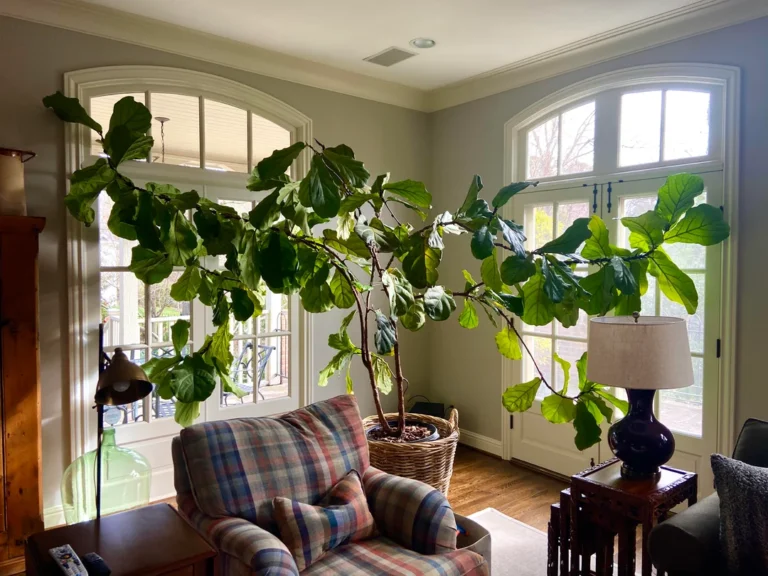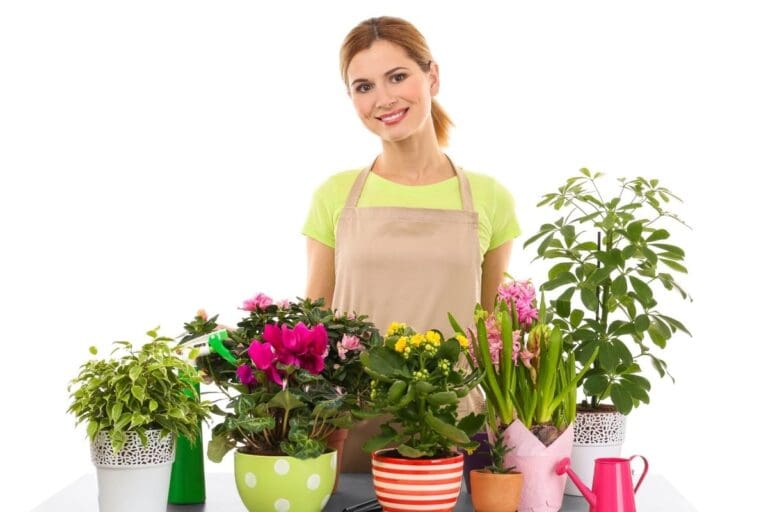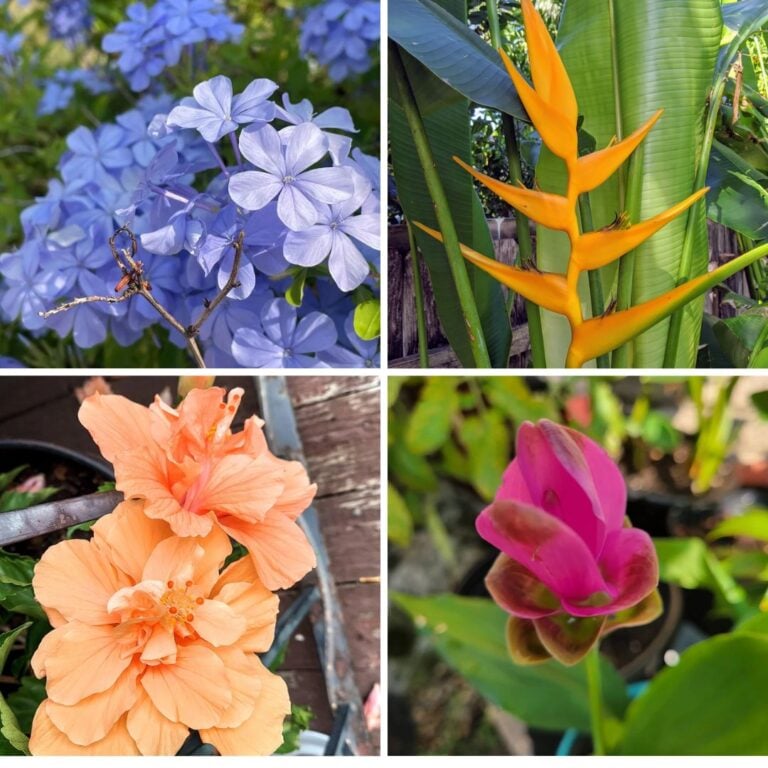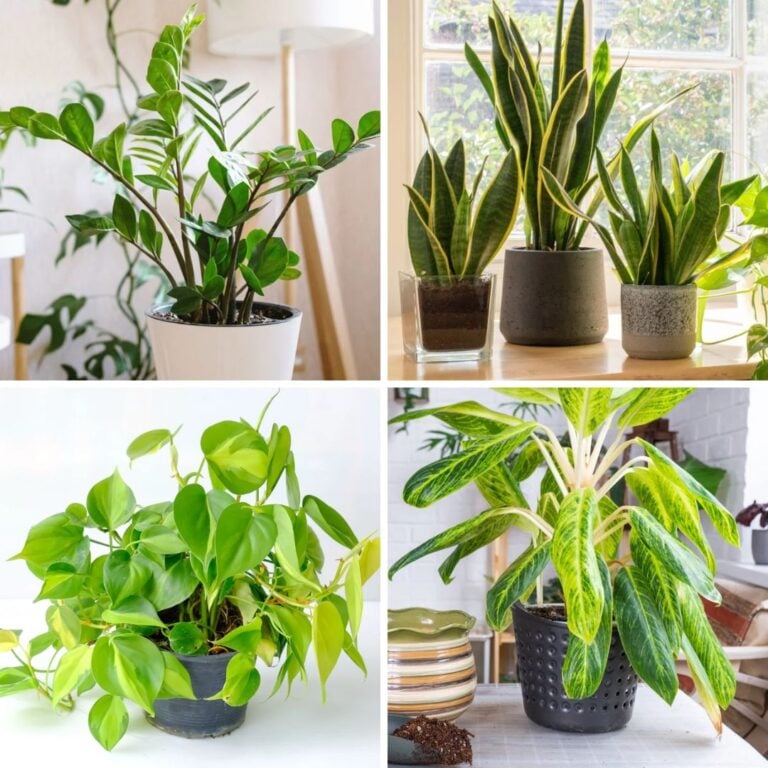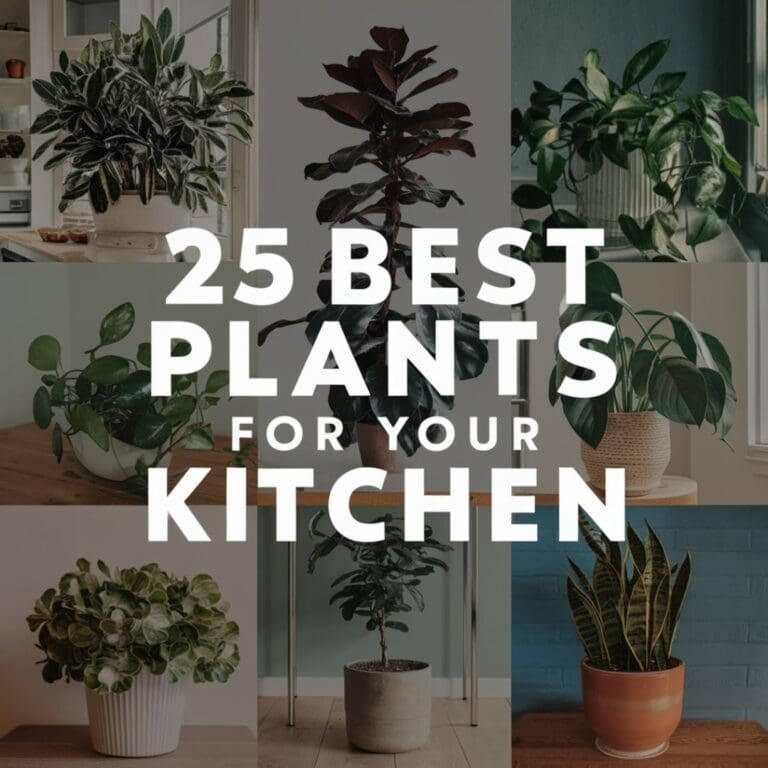5 Warm-Hued Plants to Cozy Up Your Garden This Fall
I’ve always loved changing up my garden to match the seasons.
When summer’s heat fades, I start looking for plants that still bring some warmth and color to my space.
These warm-hued plants are perfect for keeping the garden lively as summer tropicals fade away.
There’s just something about these picks—they keep the outdoors feeling bright and inviting.
Please note: Simplify Plants is reader-supported. As an Amazon Associate, I earn from qualifying purchases made by our readers with no extra cost added to you all! Some links in the post are affiliate links and I get a commission from purchases made through links in the post.
1) Orange Butterfly Bush (Buddleja davidii)

The first time I spotted the Orange Butterfly Bush, I was hooked by its bold colors. The clusters of bright orange flowers almost glow in the sunlight.
They really stand out against the green leaves. This plant loves full sun, so it’s a natural fit for summer.
I’ve found it thrives in well-drained soil and doesn’t ask for much once it’s settled in. You don’t need to water it all the time.
One thing I really like is how many butterflies and bees show up when it blooms. It’s always buzzing with pollinators, which adds a nice energy to the garden.
The flowers bloom from summer through early fall, so there’s color for a good stretch. That orange shade gives everything a cozy, sunset vibe—a nice change from the usual tropicals.
The bush can get pretty tall, several feet if you let it. I usually prune mine in late winter or early spring to keep it tidy and encourage more blooms.
It’s not picky about soil as long as it’s not soggy. Good drainage keeps the roots happy.
I like to mulch around the base to help the soil stay cool and moist during those really hot days. Honestly, it’s low-maintenance, which is a big plus for me.
If you want a warm-hued shrub that’s easy to grow and attracts wildlife, I’d say give the Orange Butterfly Bush a try. The bright flowers and tough nature make it a standout in my summer garden.
2) Golden Marigold (Tagetes erecta)

I can’t help but smile when I see Golden Marigold in my garden. The yellow and orange blooms just grab my attention every time I walk outside.
They light up any spot with their warm color. Golden Marigolds are a breeze to care for.
I just pop them in a sunny place and water regularly. They handle hot days well, which is great when my tropicals start to fade.
The blooms last ages, and if I deadhead the old ones, they keep coming back. I use marigolds to fill gaps in my beds and they work nicely in pots too.
There’s a strong scent from the leaves and flowers. Marigolds have a smell that helps keep some pests away. It’s kind of reassuring knowing they’re a natural line of defense.
I like cutting a few marigolds for vases indoors—their color cheers up my kitchen. They hold up well in bouquets and last for days after picking.
Starting marigolds from seed is honestly so easy. I just sprinkle the seeds in loose soil, water, and they pop up fast.
Whenever I want a burst of warm color, I reach for Golden Marigold seeds. The plants stay compact and keep blooming all season.
If you want low-maintenance, bright color, marigolds are a solid choice. Those golden hues are an easy way to keep things cheerful after the tropicals are gone.
3) Red Hot Poker (Kniphofia uvaria)

Red Hot Poker plants just bring so much energy to my garden. The spikes of red, orange, and yellow look a bit like a torch—hard to miss.
If I want a plant that really stands out, this is it. Red Hot Pokers are surprisingly easy to grow.
They aren’t picky about soil and handle dry conditions well. Once they’re settled in, I barely have to water them.
The blooms usually show up from late spring and keep going into summer. Bees and hummingbirds love them, and I get a kick out of watching all the activity.
The leaves are long and narrow, which adds a neat, grassy texture even when the flowers aren’t blooming. I always put them in full sun for best results.
When the flower spikes fade, I just snip them off to keep things tidy. That also encourages new blooms.
Red Hot Poker is a perennial, so it comes back year after year if you’re in the right climate. I like using them as a backdrop or a centerpiece in my warm-hued garden.
They don’t take up much space, so I can fit them in just about anywhere. I think they look especially good with other warm colors, like marigolds and echinacea.
If you’re after a low-maintenance, colorful plant, Red Hot Poker is a great pick. It’s one of my favorites for a bold burst of color after the tropicals fade out.
4) Crocosmia Lucifer

Crocosmia Lucifer is a go-to for adding warm color late in the summer. The tall, arching stems with bright red flowers look like little flames scattered through the garden.
It’s super easy to grow. I just give it sun and well-drained soil, and it doesn’t fuss about pests or diseases.
When everything else starts looking tired, Crocosmia Lucifer keeps things bright. The flowers last a good while and bring in hummingbirds, which is fun to watch.
The sword-shaped leaves are pretty cool, too. I trim the spent blooms to keep it neat, and the leaves still look nice afterward.
Crocosmia Lucifer looks best planted in groups, at least in my opinion. I like cutting the flowers for simple arrangements indoors.
If you want bold, warm color after midsummer, this is a solid choice. It comes back every year, so it’s a reliable way to keep the garden exciting.
5) Sunset Sedum (Sedum adolphii)

I really enjoy using Sunset Sedum when summer winds down. It’s a succulent with pointed leaves that shift to yellow, orange, and red if it gets plenty of sun.
That color change is just so eye-catching. Sunset Sedum is about as easy-care as it gets.
I only water when the soil dries out, and it still thrives. It handles heat and poor soil better than most succulents I’ve tried.
In my pots, this sedum forms small clusters, and sometimes the leaves really do look like a mini sunset. It stays small, so it’s great for containers, rock gardens, or even a sunny balcony.
I use it as a filler around other plants since it spreads but doesn’t take over. Clipping a few stems and rooting them for more plants is super easy.
Adding Sunset Sedum brings a warm, calm vibe to my outdoor spaces. The colors pop even more next to dark green or purple leaves.
It’s not picky about soil, just needs good drainage. I usually go for cactus mix or toss in some sand to help prevent rot.
Sunset Sedum can handle mild frost, but I move my pots inside if it gets too cold. Even indoors, it keeps its color near a sunny window.
Once it’s settled, this sedum barely needs attention. Hardly any pests, and I almost never have to prune.
Watching the colors shift through the seasons is half the fun. If you want a low-maintenance plant with sunset shades, this one’s a no-brainer.
Caring for Warm-Hued Plants After Summer
I try to keep my warm-hued plants happy after summer by changing up their care. Moving them inside, tweaking watering, and making sure they get enough light—all of that helps as the seasons turn.
Transitioning Plants Indoors
Before it gets chilly, I move my warm-hued plants inside. I check for pests—tiny bugs or webs can hide on leaves and stems.
A quick wipe with a damp cloth and trimming any dead bits gets them ready. I pick spots away from cold windows and heat vents.
Sudden temperature swings can stress them out, so I leave space between plants for air to move. Sometimes I have to repot if roots are crowded or the soil looks tired.
Fresh potting mix gives them a better start indoors.
Adjusting Watering Routines
Once my plants are inside, I water way less often. Warm-hued plants like caladiums or crotons don’t need much in cooler months since they slow down.
I poke my finger in about an inch—if it’s dry, I water lightly. If it’s damp, I wait.
Overwatering is a classic problem indoors. Too much water can cause root rot, so I always use pots with drainage.
Here’s a quick watering tip table:
| Check | What to Do |
|---|---|
| Soil is dry 1″ down | Water lightly |
| Leaves are droopy | Check for dry soil |
| Soil feels wet/soggy | Wait before watering |
Light Requirements for Warm-Toned Foliage
Bright, indirect light is key. Most warm-hued plants need plenty of light to keep their color.
I put them near windows, but not right in the harsh sun—burnt leaves aren’t a good look. If a room’s too dark, I use grow lights.
I open curtains during the day to catch as much sun as possible. Turning the plants every week helps all sides get light.
If leaves start fading or looking dull, it’s usually a hint my plant wants more light. I’ll move them closer to the window or flip on the grow lamps for a bit longer.
Design Tips for Vibrant Seasonal Displays
Warm-hued plants just bring so much life to a space. Mixing colors and creating bold focal points lets each plant shine.
Pairing Warm-Hued Plants with Cool Colors
To make those reds, oranges, and yellows pop, I always pair them with cool tones like blue, purple, or green. The contrast makes everything stand out.
Here’s how I like to combine them:
- Red begonias next to blue salvia—such a striking combo.
- Orange marigolds with a border of dusty miller for a silvery touch.
- Purple fountain grass as a backdrop for yellow lantanas.
Spacing matters. If colors are packed too close, things get messy fast.
Leaving a bit of green or mulch between warm and cool plants keeps things looking vibrant and neat.
Creating Focal Points in Outdoor and Indoor Spaces
I really enjoy using bold, warm-hued plants as centerpieces. In big outdoor beds, I’ll usually plant something vibrant—like cannas or coleus—right in the middle.
Then I soften things up with gentler colors around them. It’s a simple trick, but it works wonders for drawing the eye.
For indoor displays, I’ll pick a bright plant—maybe a red bromeliad—and set it on a windowsill, side table, or shelf where it can soak up the sunlight.
Grouping plants in odd numbers, like threes, just looks more natural to me. It’s funny how much difference that makes.
I always think about the pot color, too. Neutral or dark pots really let those warm plant colors pop.
Sometimes I’ll add a small decorative item or a textured container nearby. It’s a little extra effort, but it draws even more attention to the plant.
Frequently Asked Questions
I love using warm-hued plants to give my garden a lively, almost tropical vibe—even after summer’s over. There are so many choices that work well in both garden beds and outdoor pots.
Plus, a lot of them are easy to care for, which is a relief if you’re not exactly a plant expert.
What are some low-maintenance warm-hued plants ideal for gardens?
My go-tos are Golden Marigold and Sunset Sedum. Both are bright, and honestly, they don’t need much fussing over.
I’m also a fan of the Red Hot Poker—it stands up to heat and is pretty independent.
Can you suggest some full sun tolerant warm-toned plants for outdoor pots?
Sunset Sedum is tough, does great in pots, and just loves the sun. Crocosmia Lucifer is another good pick for containers—it doesn’t fade, even in bright light.
I find myself reaching for Golden Marigold a lot, too, when I want bold color all season.
Could you provide a list of warm-hued flowering plants suitable as tropical replacements?
I usually go with Red Hot Poker, Golden Marigold, Crocosmia Lucifer, and Orange Butterfly Bush. These bring strong reds, oranges, and golds—definitely a tropical punch.
What are the names of some popular warm-hued shrubs for a tropical garden vibe?
The best shrubs I’ve come across are the Orange Butterfly Bush and some of the bigger Marigold varieties. Both give you clusters of bright blooms and that lush, cheerful look.
How can I find easy-to-care-for plants with a tropical feel for my garden?
I look for anything labeled drought-tolerant or heat-loving. Nurseries and garden centers are usually happy to point out good options.
I’ve had luck just asking for low-maintenance, warm-hued choices like Sedum and Butterfly Bush. Sometimes you just have to ask!
What types of warm-colored plants are best for creating a tropical aesthetic in full sun areas?
I’m a big fan of Red Hot Poker, Crocosmia Lucifer, Sunset Sedum, and Golden Marigold for this. These sun-loving plants really pop with their bold, warm colors.
They can totally transform a yard or patio with that tropical vibe. If you want a space that feels a bit like a getaway, these are some great picks.
Recommended Garden Supplies
| Product Image | Our Recommended Gardening Supplies | Check Offers! |
|---|---|---|
Top Top
Top
Top
Top
Top
Top
Top
Top | rePotme Houseplant and Tropical Classic Potting Soil Mix | Check Offer On Amazon |
 Top
Top
Top
Top
Top
Top
Top
Top | Espoma Organic Indoor Plant Food | Check Offer On Amazon |
 Top
Top
Top
Top
Top
Top
Top
Top | GooingTop LED Grow Light 6000K Full Spectrum Clip Plant Growing Lamp | Check Offer On Amazon |
 Top
Top
Top
Top
Top
Top
Top
Top | Soil Moisture Meter | Check Offer On Amazon |
 Top
Top
Top
Top
Top
Top
Top
Top | Govee Hygrometer Thermometer, Bluetooth Enabled! | Check Offer On Amazon |
 Top
Top | LEVOIT Humidifiers for Large Room(Best For Plants) | Check Offer On Amazon |
 Top
Top
Top
Top
Top
Top
Top
Top | Upgraded DIY Automatic Drip Irrigation Kit, 15 Potted Houseplants Support | Check Offer On Amazon |
 Top
Top
Top
Top
Top
Top
Top
Top | Stainless Steel Heavy Duty Gardening Tool Set | Check Offer On Amazon |
 Top
Top
Top
Top
Top
Top
Top
Top | Bonide Insecticidal Soap | Check Offer On Amazon |
 Top
Top
Top
Top
Top
Top
Top
Top | Bonide 32 oz Spray Neem Oil for Organic Gardening | Check Offer On Amazon |
 Top
Top
Top
Top
Top
Top
Top
Top | Garden Safe Fungicide | Check Offer On Amazon |

